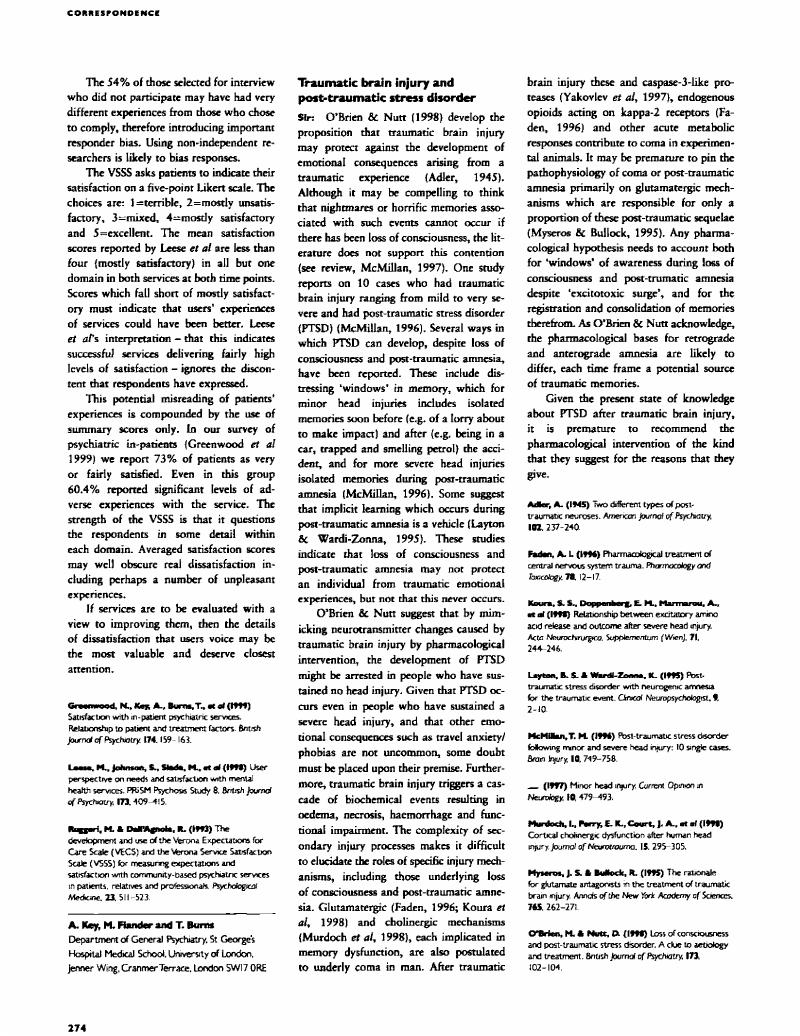Crossref Citations
This article has been cited by the following publications. This list is generated based on data provided by Crossref.
Roitman, Pablo
Gilad, Moran
Ankri, Yahel L. E.
and
Shalev, Arieh Y.
2013.
Head Injury and Loss of Consciousness Raise the Likelihood of Developing and Maintaining PTSD Symptoms.
Journal of Traumatic Stress,
Vol. 26,
Issue. 6,
p.
727.






eLetters
No eLetters have been published for this article.